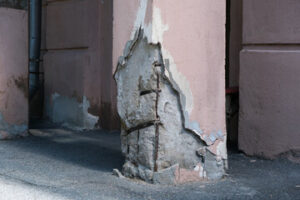Insulation Removal Perth can be difficult and time-consuming. However, it is necessary to ensure that your home is protected from contaminants such as dust and mold spores.
Before beginning insulation removal, turning off the power and disconnecting any live wires in the attic space is important. This prevents electrical shock and fire hazards.

Insulation removal is messy and dusty, but a professional will have the equipment to handle it quickly and efficiently. They will also know how to dispose of the old insulation properly. This will help prevent contamination and protect your health.
The cost of insulation removal depends on a number of factors, including square footage and material type. Generally speaking, the cost is more for blown-in insulation than for fiberglass batt insulation. However, a more complicated attic space will increase the costs because it requires more access and labor. Other factors include the size of the attic and whether there are any structural issues that must be addressed.
In addition to the cost of insulation removal, you’ll need to consider the costs of any other services you may need, such as rodent proofing and decontaminating. Professionals are equipped to handle these additional services and can often offer them at a discount.
You’ll also need to take into account any new insulation that you will install. This will increase the overall cost, but it’s a necessary step in preventing energy loss and lowering your home’s energy bills.
Replacing old insulation will improve your home’s resiliency against temperature fluctuations and reduce your energy bills. It will also help keep warm air inside during the winter and cool air in during the summer. The cost of replacing old insulation can be offset by tax credits and reduced heating and cooling costs.
Old insulation can harbor moisture, which will lead to mold and mildew growth, which not only damages the structure of your home but can be dangerous to your family’s health. Mold and moisture can also lead to rot and costly repairs.
The most common sign that you need to replace your insulation is if it has become damaged or contaminated. If your attic has been compromised by water leaks, pests, or mold, it’s time to remove it and replace it with new insulation. It’s important to hire a professional for this job, as improper disposal can result in fines and health hazards. Professionals will follow strict guidelines to ensure proper insulation disposal.
Preparation
Insulation removal can be an effective way to improve the energy efficiency and air quality of a home. It can also help homeowners replace old insulation with newer materials that are more efficient and less costly to use. However, there are several important factors to consider before choosing an insulation removal service. These factors include: the type of insulation, the cost of the service, and the safety precautions required.
Before beginning the process of removing old insulation, it is important to prepare the work area. This will help ensure a safe working environment and reduce the risk of accidents or injuries. For example, if the attic has live wires, it is important to turn off the power and disconnect them before starting the project. This will prevent electrical fires and other hazards from occurring.
It is also important to select the proper equipment for the job. This will include personal protective equipment (PPE), such as dust masks and gloves, and the right tools to remove the insulation. In addition, it is crucial to have a clear plan for the disposal of the insulation. This will ensure that all hazardous materials are removed properly and in accordance with environmental regulations.
The need for insulation removal can arise due to a variety of reasons. For example, old insulation can become damaged or contaminated with mold or pests, which may lead to health problems for the occupants of the home. Additionally, if the insulation is outdated or inefficient, it can lead to higher energy bills.
It’s best to choose a company that has experience with various insulation types and services. This will allow them to provide an accurate estimate and complete the job quickly and efficiently. It is also essential to check whether the company has a good reputation for customer service. Personal referrals and online reviews are a great way to evaluate companies.
In addition, it is important to find a company that offers a range of services, including air sealing and mold remediation. This will help streamline the process and save time and money. Moreover, it is important to choose a company that follows appropriate disposal protocols for different insulation types. This will prevent environmental hazards and legal issues.
Removal
Insulation removal is the process of replacing old insulation in your home. This is typically done when your old insulation becomes compromised or damaged by water damage, mold or rodents. It can also be a necessary step if you are planning to renovate your home. Removing existing insulation allows you to start fresh and avoids the risk of damaging new insulation during renovations.
The specific insulation removal process will vary depending on your home and the type of insulation you have. For example, blown in cellulose insulation is sucked out using a commercial grade shop vac while fiberglass batt insulation is rolled up and placed into waste bags. Before starting the removal process, your contractor will sanitize the work area and cover any furniture that could be affected by the dust from the insulation. They will also take precautions to ensure that their workers are not exposed to any mold, pest infestations or other hazards.
Before removing insulation, it is important to shut off the power in your attic space. This will help prevent any accidental damage to electrical wires or junction boxes that may be located in the attic space. Additionally, it will minimize the risk of any fires or explosions during the process.
The removal process begins with a complete inspection of your attic to determine what kind of insulation you have and what conditions it is in. Your insulation contractor will evaluate the attic for any structural issues that could affect the results of your renovation or removal project. They will also look for any existing issues that need to be addressed before beginning the removal process, such as water damage or mold.
After sanitizing the work area, your insulation contractor will begin the removal process by clearing any existing insulation in the attic. They will then prepare the area for the installation of new insulation. This includes ensuring that the attic space is free of any electrical wires, junction boxes, light fixtures or other structures. They will also sanitize the attic floor and any other areas that may be exposed to insulation dust.
Disposal
Insulation is often discarded, especially when a home is undergoing updates or renovations. However, improper disposal of this material can create health and safety hazards. To avoid these risks, it’s best to hire a professional to remove old insulation and handle the proper disposal of the materials. This will ensure that the process is done correctly and the environment is protected.
To remove old insulation, you’ll need a few tools and supplies. This includes a heavy-duty vacuum and large bags for waste. You should also wear a mask or respirator to protect yourself from dust and other contaminants. It’s also important to prepare the workspace properly by covering floors and walls with a tarp. This will prevent the contamination of other areas of your home.
The type of insulation you have in your attic will determine the kind of work that needs to be done. Fiberglass batting can be removed by hand, while loose-fill fiberglass or cellulose insulation requires an industrial hose. You can also opt for mineral wool, made from rock and slag wool, which has excellent fire and sound-proofing properties.
While the work itself is relatively simple, it’s essential to prioritize safety. It’s best to have a helper to monitor the industrial vacuum while it’s in use. Depending on the type of insulation, it can be very hazardous to breathe in the dust and fibers.
Once the attic insulation is removed, it should be placed in a dumpster outside your home. This will prevent the contaminated insulation from being accidentally carried into the house. If you’re unsure of where to dispose of your old insulation, contact your local waste management company or recycling plant to learn more about the regulations in your area.
Once the attic is clear, it’s a good idea to clean up your tools, equipment and supplies. This will ensure that no unhealthy particles are left behind in your home and allow you to start the new installation process. It’s also recommended to perform a post-insulation removal inspection to make sure the process was completed properly. This will also help you identify any areas of concern, such as mold or vermin infestation.





